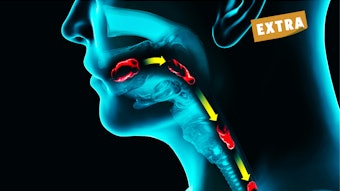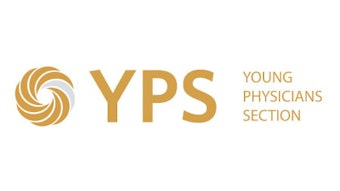Best Practices for Surgical Site Preparation of Skin and Mucosa
Surgical site preparation is an important part of preventing SSIs.
Nathan Sim and Hanna Lee, medical students at Wayne State University School of Medicine, and John D. Cramer, MD, for the Outcomes Research and Evidence-Based Medicine Committee

Surgical site infections (SSIs) are a common and costly complication of surgery. They occur in approximately 2% of all surgical procedures in the United States, and they can lead to increased morbidity, mortality, and healthcare costs.1
There are a number of factors that can contribute to the development of SSIs, including the patient’s underlying medical condition, the type of surgery, and the technique used to prepare the surgical site. However, the most important factor is the presence of bacteria on the skin at the surgical site. The goal of surgical site preparation is to remove bacteria from the skin at the surgical site.
There is recent evidence to suggest that combination alcohol-based antiseptic solutions are more effective than aqueous solutions at reducing the risk of SSIs. Combination alcohol-based antiseptic solutions include chlorhexidine gluconate (CHG) with alcohol (e.g., ChloraPrep) and povidone iodine (PVP-I) with alcohol (e.g., DuraPrep). Meta-analysis of recent randomized trials suggests that alcohol-based combination antiseptic agents are 40% more effective than non-alcohol-based agents at reducing the risk of SSIs.2 Some data also suggest that CHG-based antiseptic agents may be more effective than PVP-I-based agents, although the evidence for this is less robust.
Based on the available evidence the Centers for Disease Control and Prevention (CDC), the World Health Organization (WHO), and others have released guidelines recommending surgical site preparation with alcohol-based antiseptic agents unless there is a contraindication for the alcohol component.2,3 The WHO guidelines as well as the United Kingdom’s National Institute for Health and Care Excellence (NICE) specifically recommend CHG alcohol over PVP-I alcohol, whereas the CDC recommends any alcohol-based combination preparation. 2,3
Head and neck surgery presents a unique challenge for surgical site preparation. The proximity of the surgical site to the airway and oxygen increases the risk of surgical fire. All alcohol-based preparations contain an explicit warning not to use for head and neck surgery due to the risk of fire. In addition, the eyes, nose, and mouth are mucosal surfaces, which means that they are more susceptible to the toxicity of certain antiseptic solutions. For example, CHG can cause ototoxicity or ophthalmic toxicity if it comes in contact with the ears or eyes. Among recent guidelines, only the NICE guidelines specifically discuss second-line options when alcohol is contraindicated, whereby they recommend CHG aqueous.
Most of these data are applied from other surgical fields. There are no randomized trials comparing different non-alcohol-based PVP-I aqueous versus CHG aqueous in preparation of the skin prior to head and neck surgery.
A separate question for otolaryngologists is whether surgical site preparation of mucosal surfaces of the upper aerodigestive tract is necessary, and if so, what is the optimal preparation. Recent meta-analysis of 470 patients found that topical mucosal antisepsis prior to head and neck surgery reduced the risk of surgical site infection by 56%.4 This analysis included a variety of different antiseptic preparations for mucosal surfaces. The optimal antiseptic agent, timing, and frequency of dosing remain to be determined.
Based on the available evidence, the following recommendations can be made for surgical site preparation for otolaryngologists:
- For surgeries of the face or head, PVP-I aqueous antiseptic solutions are recommended, as 4% CHG aqueous is contraindicated around the ears or eyes.
- For surgeries of the neck, CHG aqueous or PVP-I aqueous are both appropriate options. Some data suggest that CHG is more effective against a wider range of bacteria with a longer duration.
- Topical preparation of mucosal surfaces related to head and neck surgery may reduce the risk of surgical site infection, but the optimal antiseptic agent has not been determined.
- For surgical sites outside the head and neck, CHG alcohol is the recommended surgical site preparation.
Surgical site preparation is an important part of preventing SSIs. The choice of antiseptic solution must be made on a case-by-case basis, considering the type of surgery, the patient’s underlying medical condition, and the potential risks and benefits of each agent. The best antiseptic solution for head and neck surgery is the one that is most effective against the bacteria likely to be present at the surgical site and is least likely to cause irritation or a fire.
References
- de Lissovoy G, et al. Surgical site infection: incidence and impact on hospital utilization and treatment costs. Am J Infect Control. 2009;37(5):387-397. doi: 10.1016/j.ajic.2008.12.010
- Allegranzi B, et al. New WHO recommendations on preoperative measures for surgical site infection prevention: an evidence-based global perspective. Lancet Infect Dis. 2016;16(12):e276-e287. doi: 10.1016/S1473-3099(16)30398-X
- Berrios-Torres SI, et al. Centers for Disease Control and Prevention guideline for the prevention of surgical site infection, 2017. JAMA Surg. 2017;152(8):784-791. doi: 10.1001/jamasurg.2017.0904
- Lee JJ, et al. Infection control with topical antimicrobial prophylaxis for mucosal head and neck surgery: a meta-analysis. Otolaryngol Head Neck Surg. 2023;168(3):261-268. doi: 10.1177/01945998221100801





















